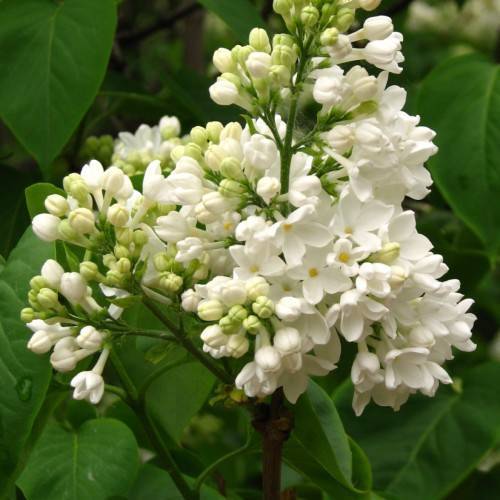
common lilac
Syringa vulgaris 'Avalanche'
Cycle:
Perennial
Watering:
Average
Hardiness Zone:
4 - 7
Flowers:
Flowers In Spring
Sun:
Full sun
Leaf:
Yes
Growth Rate:
Low
Maintenance:
Low
Care Level:
Moderate
watering
Common lilacs require moderate, regular watering until established. Once established, they can tolerate periods of drought. Water newly planted lilacs weekly, making sure that the soil is kept moist, but not soggy. During hot, dry spells, common lilacs should be watered once or twice a week depending on the weather. Avoid letting the soil dry out excessively. It is also important to water to the point of run-off, as some soil types will allow the water to run right through and beyond the root zone without absorbing it. As common lilacs mature, their root systems become larger and are more tolerant of periods of drought.
sunlight
Common lilac (Syringa vulgaris 'Avalanche')needs full sunlight for 6 to 8 hours a day to thrive. It will tolerate partial shade but should be exposed to direct sunlight for the majority of the day. The best time of the day for the plant to receive sunlight is between 9am and 4pm. If the plant is planted in a spot where it receives 6 to 8 hours of sunlight, it will produce more flowers and have a higher temperature, resulting in better growth overall.
pruning
Common Lilac (Syringa vulgaris 'Avalanche') should be pruned yearly in late winter to early spring once the plant is established, when temperatures have dropped below freezing for several weeks. This procedure is important to ensure the health of the plant, and promote increased blooming. Begin pruning old and dead wood, taking care to remove all stems more than 3 years old down to the main trunk. After removing larger neglected growth, address any crossing or rubbing branches. Cut these back to the main trunks. Finally, reduce the length of the remaining shoots by 1-third to 1-half. This pruning technique should be repeated every late winter/early spring for at least 3 years.
